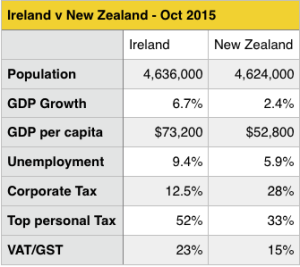Double-digit inflation and aggressive tightening by central banks has been the order of the day in the global economy, however consumer spending still remains robust especially in the more elastic (luxury) goods and services market. Events like Beyoncé concert in Stockholm increased the inflation rate in Sweden – see here for previous post. As well as concerts, tourist activity has also been back to pre-COVID levels, so why has consumer demand held up when monetary conditions are very tight i.e. high interest rates.
- The labour market remains very strong with low unemployment and strong wage growth.
- The COVID times saw stimulus payments to consumers who were unable to spend their money therefore accumulated savings. This money is now finding its way into the circular flow.
- A decade of low interest rates has led to greater liquidity and consumer spending.
- Mortgage payments are the biggest debt that households but the rapid increase in interest rates has had less of a profound effect especially in the euro area. The ECB has risen interest rates by 4% (-0.5% – 3.5%) since late last year but the average rate for a mortgage is 2.19%.
- Mortgage holders are now favouring a fixed term for their loan so they are only impacted when they have to refinance existing loans.
- Households and firms are still optimistic about the future and continue to spend and borrow.
- The boom in property prices since the GFC has meant a lot of younger people have been pushed out of the market and rent accommodation – see graph. The dominance of young people in the rental market is driven by both circumstances (such as an inability to afford a down-payment to buy a home, or to qualify for a mortgage) as well as choice (due, for instance, to the greater flexibility of renting relative to owning). The higher average age of homeowners has led to more that are mortgage free.

However as is the case with monetary policy there is the pipeline effect a time lag for the impact of higher rates to reduce spending and therefore can be inappropriate. Sometimes instead of offsetting the effects of the business cycle this policy might reinforce the business cycle rather than acting counter-cyclically. Until then the consumer is still keen to spend whether it be travel, concerts or the latest fashions.
Source: OECD
Sign up to elearneconomics for comprehensive key notes with coloured illustrations, flash cards, written answers and multiple-choice tests on Inflation that provides for users with different learning styles working at their own pace (anywhere at any time).







 Whilst there has been a lot of talk about Auckland’s flattening house prices the city is ranked only behind Hong Kong (94.1%) as the most unaffordable city in the Economist’s ‘cities house price index’ – house prices in Auckland are 73.8% overvalued compared to the average income. This figure is ahead of Sydney, Amsterdam, London, New York, Paris and Vancouver – see graph from The Economist – showing how housing is basically unaffordable in proportion to earnings.
Whilst there has been a lot of talk about Auckland’s flattening house prices the city is ranked only behind Hong Kong (94.1%) as the most unaffordable city in the Economist’s ‘cities house price index’ – house prices in Auckland are 73.8% overvalued compared to the average income. This figure is ahead of Sydney, Amsterdam, London, New York, Paris and Vancouver – see graph from The Economist – showing how housing is basically unaffordable in proportion to earnings.











